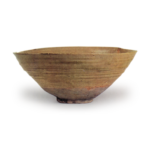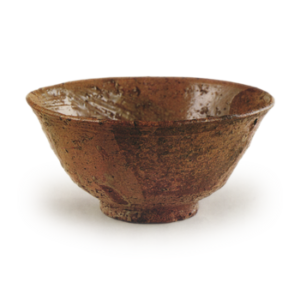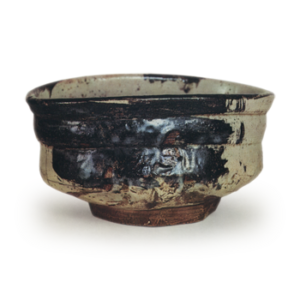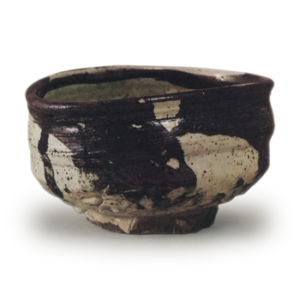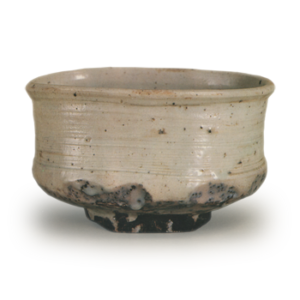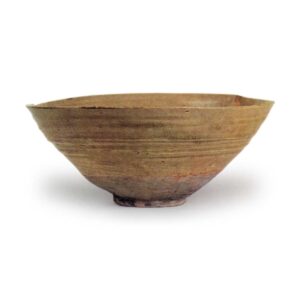
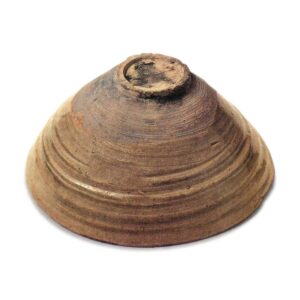
15th century
Height 10.0cm, Bowl diameter 24.1cm, Bottom diameter 7.0cm
Aichi Prefectural Ceramic Museum
Among Koseto ware from the middle of the Muromachi period (1333-1573), the existence of a large form with ash glaze on the interior and exterior is conspicuous, along with grated dishes and deep dishes with folded edges. In Seto, these are called flat bowls or flat tea bowls, and the large forms are called katado. In his “History of Seto City,” Mikiya Akatsuka discusses the transition of these bowls as having been converted from ash-glazed tenmoku tea bowls, but ash-glazed tenmoku is a tenmoku bowl, and flat bowls are considered to have a different lineage. The mountain tea bowl was an everyday utensil of the Kamakura period, and since the late Kamakura period, there have been a small number of high-grade products copied from Chinese blue-and-white porcelain bowls. It is thought that flat bowls, as copies of Chinese ceramics, replaced mountain tea bowls as production of daily vessels improved during the Muromachi period (1333-1573). Usually 16 to 18 cm in diameter
Although most of them are about 16 to 18 cm in diameter, large-sized ones like this bowl were also produced, and it is not necessarily appropriate to call them “body”. It is made of yellowish-white, rather coarse clay, and was quickly ground at once on the potter’s wheel. The base is a tsukegatai, and the itokiri on the back of the base is left intact. The ash glaze is applied generously over the base and the bottom, and the slightly oxidized firing gives the ware a yellowish green color. The smooth and deep luster of the shaft makes this a particularly outstanding example among the many flat bowls.

